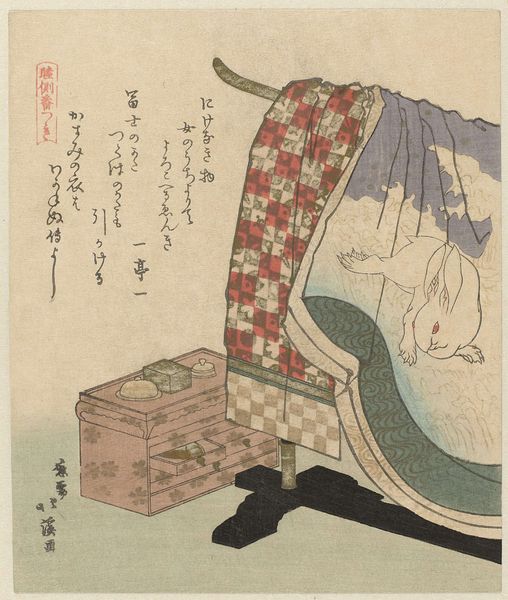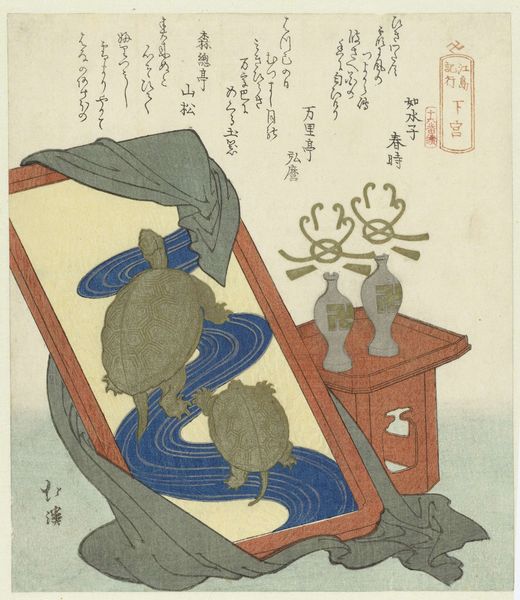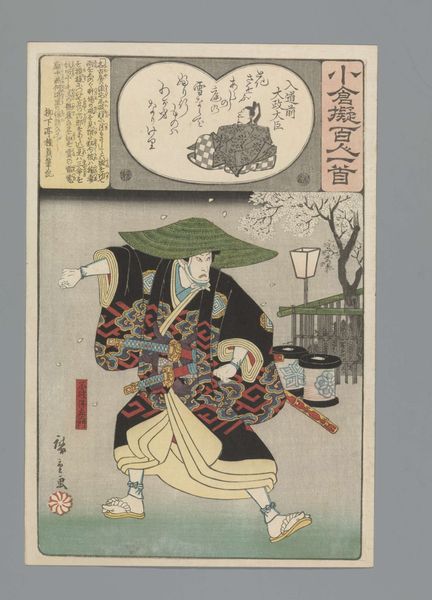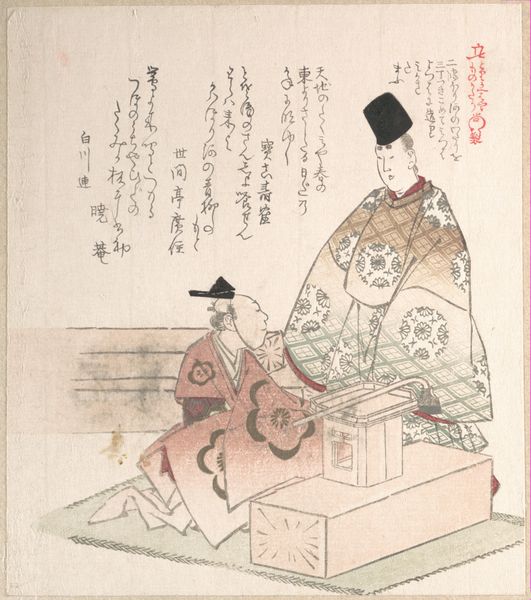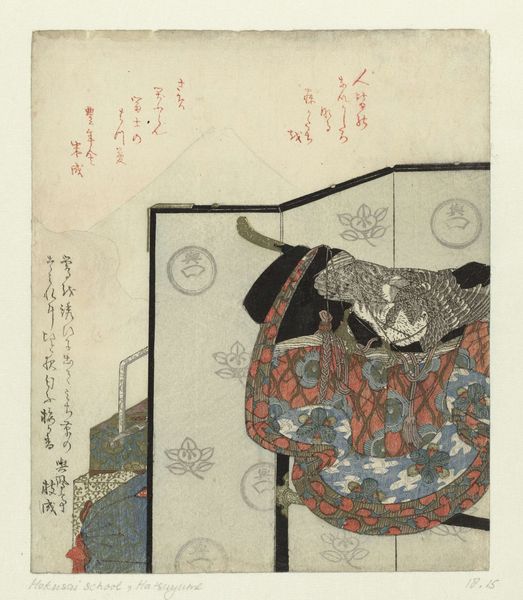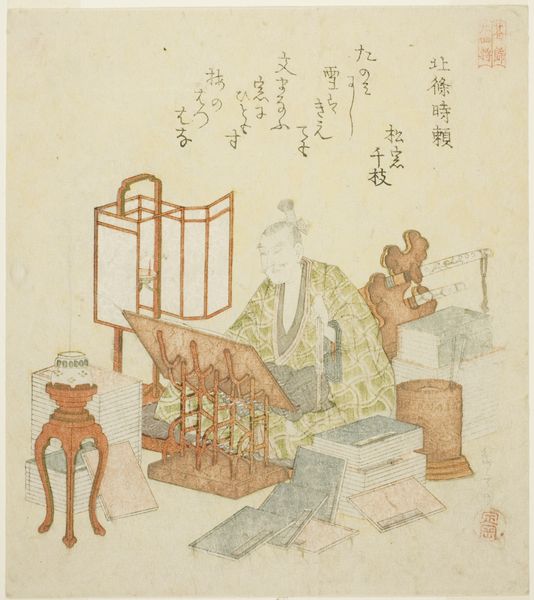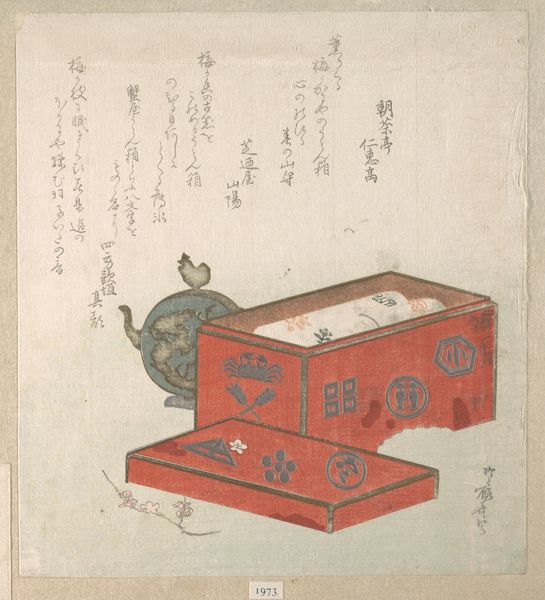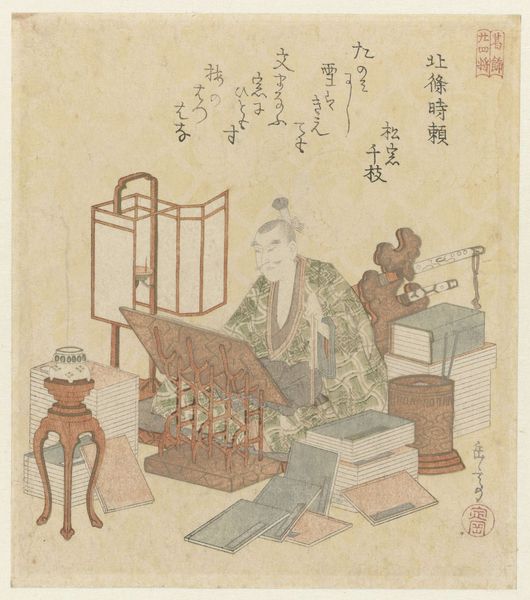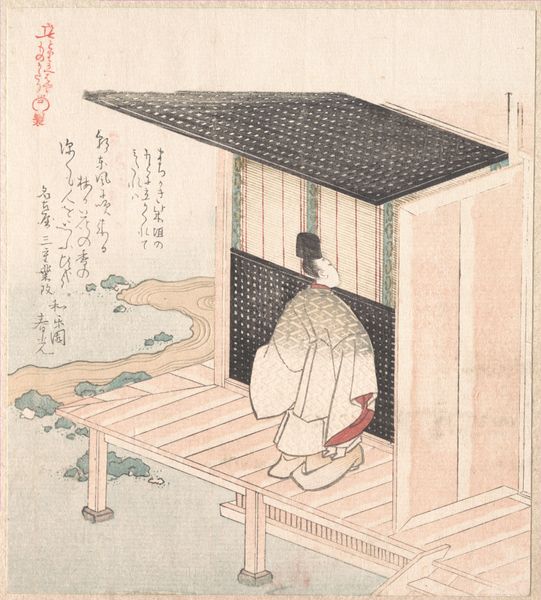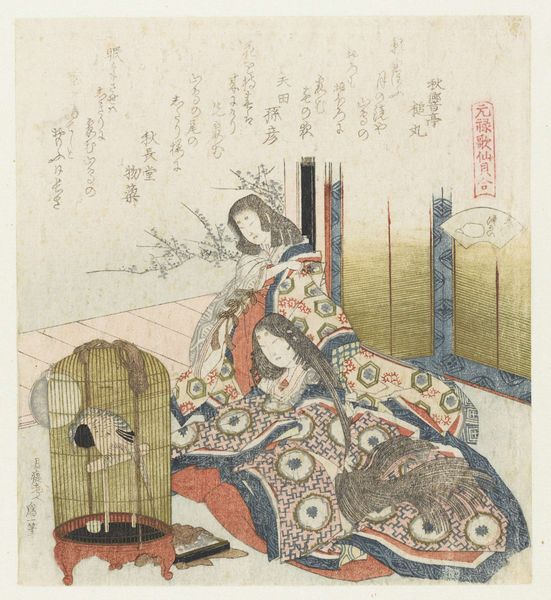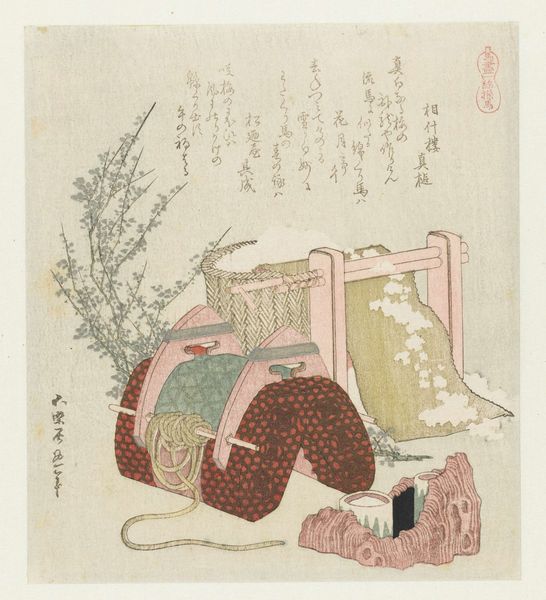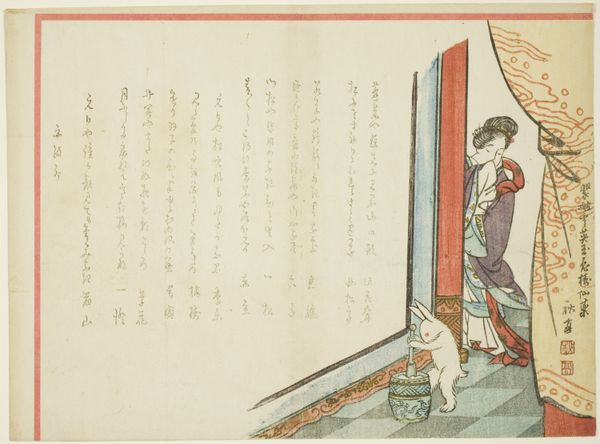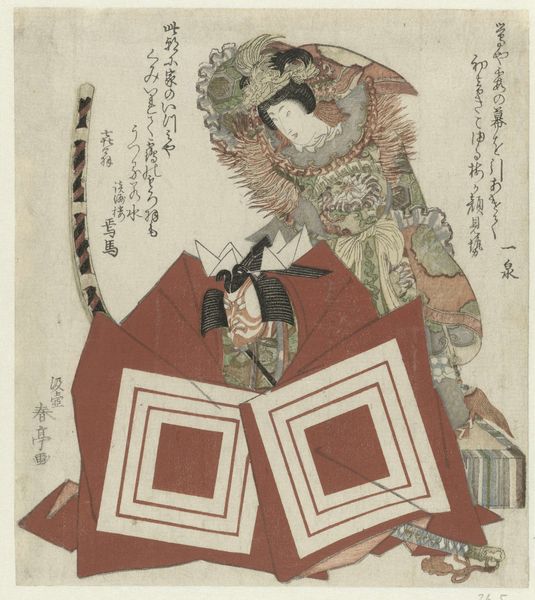
Nakamura Shikan as Teranishi Kanshin Possibly 1833 - 1835
0:00
0:00
print, ink
#
portrait
#
narrative-art
# print
#
asian-art
#
ukiyo-e
#
japan
#
figuration
#
personal sketchbook
#
ink
Dimensions: 14 × 9 13/16 in. (35.56 × 24.92 cm) (image, sheet, vertical ōban)
Copyright: Public Domain
Curator: This is Utagawa Kunisada’s print, "Nakamura Shikan as Teranishi Kanshin," likely created between 1833 and 1835. What strikes you first about it? Editor: Well, the figure's enclosed in what looks like a woven box, or maybe a palanquin? And his expression… he seems trapped and rather anxious. How do you interpret this work? Curator: Exactly. The palanquin itself becomes a symbol of restriction. Remember that Kunisada worked within a rigid socio-political structure. Kabuki actors, despite their fame, occupied a lower rung in the Edo period hierarchy. Could this print be a subtle commentary on social constraints, portraying even celebrated figures as confined by societal expectations? The theatrical setting is a mask and the face itself is trapped behind the confines of the play’s stage. What is your feeling on that possibility? Editor: That's interesting! I hadn’t thought of it in terms of social hierarchy, more from the narrative element. Curator: Consider, too, the gaze directed outward, beyond the confines of the palanquin, a possible longing for liberation, artistic freedom, or perhaps even societal change. The narratives depicted, although veiled in a mask, reveal much about society. What might be inferred from the visible inscriptions? Editor: I see. So, the print isn't just a portrait, but a statement on the actor’s position and the restrictive norms of the time, as well as what could be read in Japanese as a form of subtle artistic commentary. I hadn’t really understood it until you explained all of that. Curator: Precisely. Art offers such nuanced insights when examined within its complex historical and social landscape. The role of the palanquin gives great meaning when one is made to feel "lesser than," so very common at this time in Japanese art history. What have you learned? Editor: Definitely a new understanding of ukiyo-e as social commentary. Curator: Indeed, viewing artworks through an intersectional lens enriches the experience, providing a voice for societal and art world evolution.
Comments
No comments
Be the first to comment and join the conversation on the ultimate creative platform.
